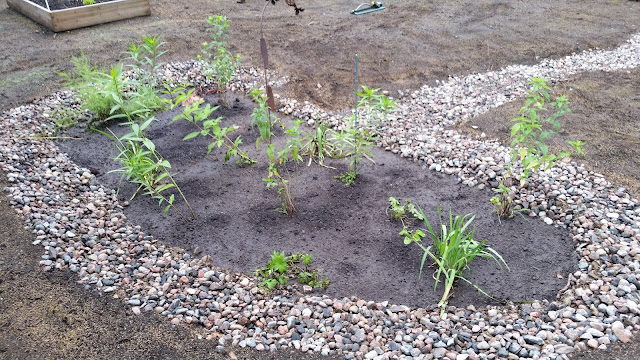Whew! I haven't updated this blog in 5 years!
Summer 2024 and 2025 have had significant rain events that have flooded streets and basements in Montreal. Luckily for us, all our recent investments in waterproofing our basement have paid off (membrane on foundation and 2 sump pumps) and, knock on wood, our basement has remained dry. Our rain garden has certainly done its share of the work but preventing all the water from our roof to go in the city's overflowing storm drain. Imagine if everyone had a rain garden!
Here's what our rain garden looks like after 5 years. Goldenrod (solidago canadensis) has overtaken other plants but it still looks pretty.



















